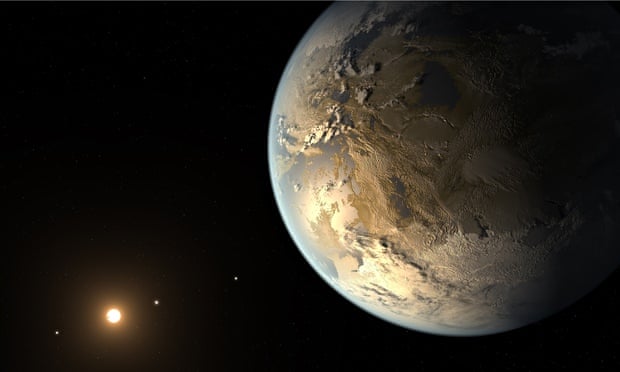
At the 225th meeting of the American Astronomical Society (AAS) in Seattle some fabulous discoveries have already been made in the area of planetary science. These concern the identification of two planets deemed "Goldilocks" candidates - which meet the same conditions for life support as here on Earth (which lies precisely within a habitable zone at the right distance from our star, the Sun).
The new data, as before, comes compliments of the Kepler Space Telescope. Now, with the announcement on Tuesday (at the AAS meeting) of 554 new planetary candidates discovered, Kepler's grand total comes to 4, 175. However, of those thousands only eight are within the "Goldilocks zone" where the host star is not too hot or too cold - hence just at the right distance to keep water in the liquid state.
While the latest findings essentially double the number of planets in the habitable zone, astronomers are especially excited about two of the candidates:
1) Kepler - 438b - which is only 12 percent larger than the Earth in diameter or
(0.12) (8,000 mi.) = 960 miles greater
This means a larger density than would be expected from a gas planet, hence likely a rocky planet (astro-geologists assign about a 70 percent chance of being rocky).
2) Kepler - 442 b is a bit larger - about 33 percent enhanced over Earth's diameter or:
(8,000 mi.) / 3 = 2667 miles greater or 10, 667 mi.
This means a larger surface gravity (g) and at least a 60 percent chance of being rocky. Interestingly also, both planets orbit a red dwarf star (late K or M spectral type) - not a G2 spectral type like our Sun. The red dwarf stars being at much lower surface temperature (4,000 F vs. 11,000 F for Sun) would require any planets to be much closer to arrive within the habitable zone and this is what has been found. By way of comparison here: 438 b receives 40 percent more light from its red dwarf star than Earth from its Sun, while Kepler 442 b receives 66 percent of the light (or 33 percent less). From this it is reckoned that the latter candidate has a 97 % chance of being in the habitable zone and the former a 70 % chance.
For perspective here, it's relevant to consider what is most important. According to SETI institute astronomer Douglas Caldwell, who presented the findings to the AAS gathering, we are now that much closer to finding actual twins of Earth - and thereby possibly answering the question: 'Are we alone?'
In the words of Guillermo Torres, an astronomers at the Harvard-Smithsonian Center for Astrophysics:
"These planets do exist. We didn't know that before. What we're really looking for eventually is signs of life. We're not there yet. It will take many years."
Indeed! Which begs the question: 'Can any kind of life on these exo-planets really be determined from a distance?'
I don't believe this is in any way possible. One might find "suggestions" or "hints" that life could exist on them *, say by examining the light variations of their atmospheres (when the planets pass in between their suns and Kepler's observational line of sight and certain differences in the photometry are detected) but this is only identifying a pre-condition for life. Not life itself.
Really, technically speaking, to ascertain life is on these worlds means landing actual space craft there to do organic investigations, such as we have done with Mars robot landing craft, like the Viking and more recently, Curiosity.
But this is beyond any conceivable technology for now. Kepler 438 b, for example, is 475 light years distant, meaning that even if we could develop a spacecraft to travel at light speed (300,000 miles per second) it would take 475 years to get there. Humans might not still be around by the time it arrived -having gone to perdition because of the runaway greenhouse effect.
Alas, the most we may be left with is the intriguing possibility of life existing on these worlds, without actually knowing it does.
--------
* The ELT (“Extremely Large Telescope”) planned by European astronomers will offer the combination of light-gathering power and sharpness of imaging to draw such inferences about those planets orbiting nearby,
No comments:
Post a Comment